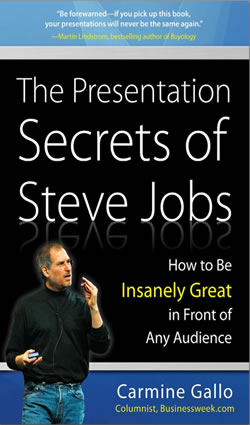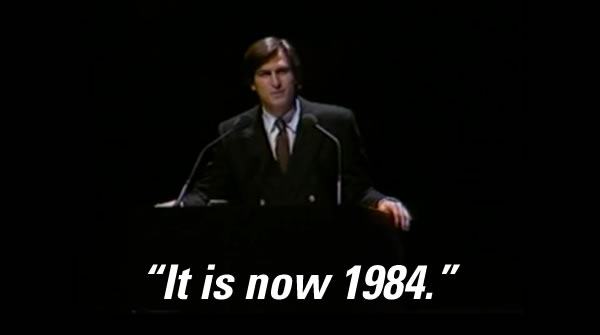You’ve probably seen Steve Jobs’ January 1984 Cupertino demo of the original Macintosh, which was done in front of Apple’s investors and includes the standard cash-flow analysis and other suit-related bric-a-brac. There was another demo in front of a very different audience on the opposite coast, and it hasn’t been generally available for viewing until now. TIME has posted the video of Steve Jobs’ January 1984 demo at the Boston Computer Society, which was made in front not in front of Apple investors, but in front of computer enthusiasts and the general public:
TIME’s Harry McCracken writes:
People who attended the shareholder meeting saw the more historic presentation — hey, it came first — but what they got was also, in effect, a rehearsal for the later Boston one, which came out more polished. The BCS version was also longer and meatier. After the unveiling, Jobs participated in demos and a Q&A session with members of the Macintosh team: Bill Atkinson, Steve Capps, Owen Densmore, Andy Hertzfeld, Bruce Horn, Rony Sebok, Burrell Smith and Randy Wigginton. (Apple cofounder Steve Wozniak, not a Mac team member, crashed the panel and talked about the Apple II line of computers.) Even more than the shareholder meeting, the BCS one was a prototype for the media extravaganzas that we citizens of the 21st century call Stevenotes.
 Unlike the Cupertino meeting, which you had to be an Apple shareholder to attend and was aimed primarily at the suits, the Boston gathering was open to the general public and aimed at computer enthusiasts and people who’d be likely to buy a Mac. Even then, you can see Steve’s presentation technique emerging — a technique that he’d refine over the years and use to great effect after his return to Apple in 1997:
Unlike the Cupertino meeting, which you had to be an Apple shareholder to attend and was aimed primarily at the suits, the Boston gathering was open to the general public and aimed at computer enthusiasts and people who’d be likely to buy a Mac. Even then, you can see Steve’s presentation technique emerging — a technique that he’d refine over the years and use to great effect after his return to Apple in 1997:
- He created a story. Rather than simply dive into the technical specs of the Macintosh, he started his presentation with a story. He introduced an antagonist, IBM, the other dominant computer company of the time, who had a long history and great success, but a vision so blinkered that they blew several opportunities to lead and were perenially playing catch-up. Then he introduced the hero, Apple, the industry’s last, best hope for stopping IBM from completely dominating the computer industry and hobbling it with its lack of foresight. Finally, he shows how the hero will do so: Macintosh.
- He delivered the experience. “People don’t buy drills,” the marketing wisdom goes, “they buy holes.” Steve followed this rule and showed what was possible with the Mac, making sure that software like MacPaint and MacWrite got significant demo time. Remember, it was a command-line world back then, and GUIs were largely unknown to the public, so it was important to give deliver this new experience.
- He rehearsed and rehearsed. If you look at the Cupertino demo and the Boston demo, you’ll see that a lot of Steve’s presentation is the same, and shows that spent a considerable amount of time rehearsing. If you’ve ever suffered through a presentation where the presenter didn’t put in the necessary practice, you’ll appreciate the polish that comes through in a well-rehearsed presentation.
I recommend watching Stevenotes for pointers, as well as reading Carmine Gallo’s book, The Presentation Secrets of Steve Jobs.
